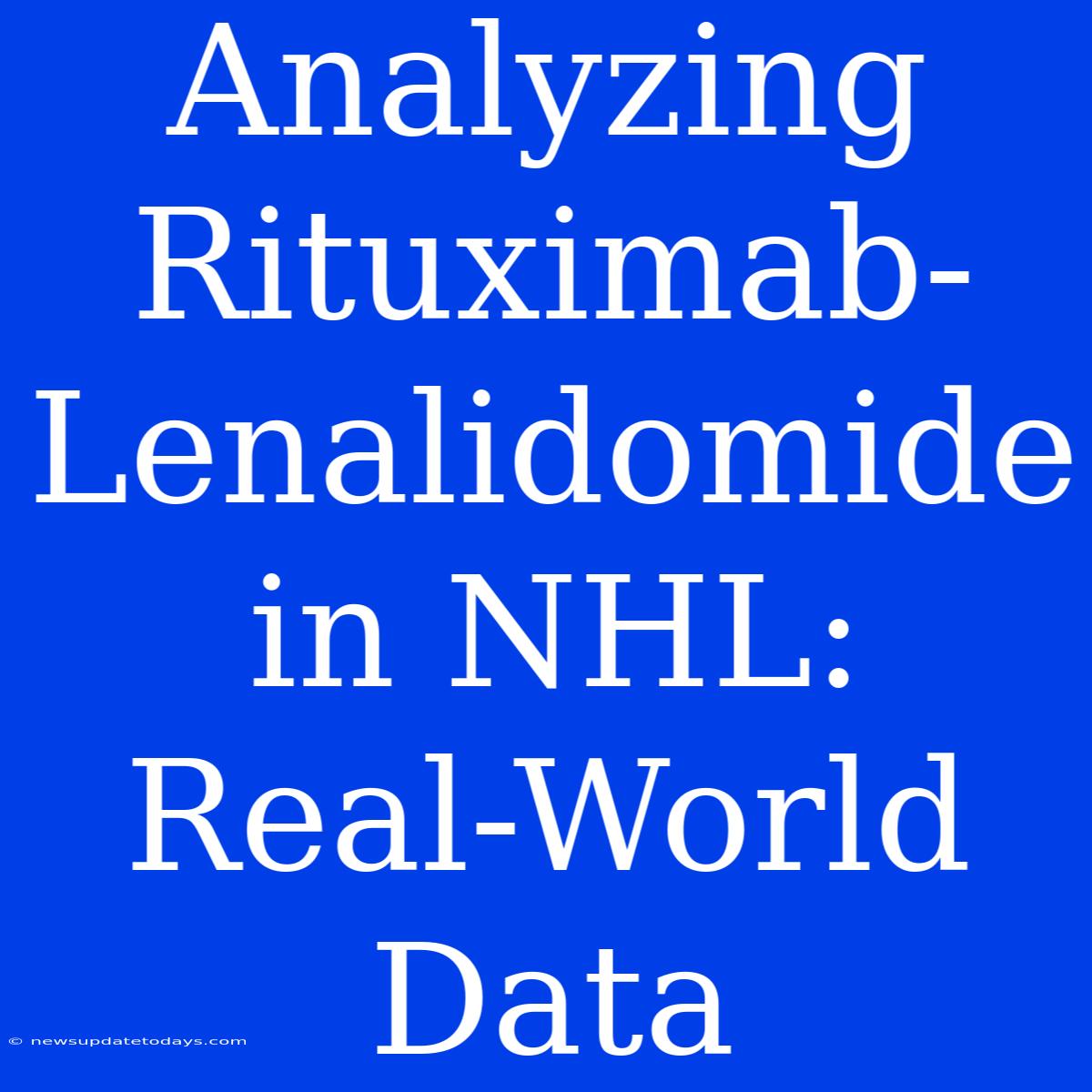Analyzing Rituximab-Lenalidomide in NHL: Real-World Data Insights
Rituximab-lenalidomide has emerged as a significant treatment option for Non-Hodgkin Lymphoma (NHL), particularly in relapsed or refractory settings. While clinical trials provide valuable data, understanding the effectiveness and safety profile in real-world clinical practice is crucial. This article delves into real-world data analysis of Rituximab-Lenalidomide in NHL, offering insights into its efficacy, potential side effects, and overall impact on patient outcomes.
Understanding the Real-World Setting
Real-world data (RWD) encompasses information gathered from various sources outside of traditional clinical trials, including electronic health records (EHRs), claims databases, and patient registries. Analyzing RWD provides a broader perspective on treatment effectiveness, capturing the complexities of diverse patient populations and clinical settings not always represented in controlled trials. This is particularly important for Rituximab-Lenalidomide, where patient characteristics and treatment decisions can vary widely.
Key Findings from Real-World Studies: Efficacy and Safety
Several real-world studies have investigated the use of Rituximab-Lenalidomide in NHL. While specific findings vary based on the study design and patient population, some consistent themes emerge:
-
Response Rates: RWD studies generally show response rates consistent with those observed in clinical trials, indicating that the effectiveness of this combination therapy translates well into real-world practice. However, the observed response rate may be influenced by patient selection and the presence of comorbidities.
-
Progression-Free Survival (PFS): Real-world data frequently supports the observation of a meaningful PFS benefit with Rituximab-Lenalidomide. However, the duration of PFS can be affected by factors such as the patient's overall health, prior treatment history, and the specific subtype of NHL.
-
Overall Survival (OS): Analyzing OS in real-world settings presents challenges due to the influence of multiple factors beyond the treatment itself. While some studies suggest a survival benefit, further investigation is needed to fully understand the long-term impact of Rituximab-Lenalidomide on OS in diverse NHL populations.
-
Toxicity Profile: Real-world data allows for a detailed evaluation of the safety profile. While generally manageable, side effects like neutropenia, thrombocytopenia, and fatigue are frequently reported, mirroring clinical trial observations. However, the incidence and severity of these side effects might vary in the real-world setting due to patient-specific factors and differences in treatment administration.
Limitations of Real-World Data Analysis
It's crucial to acknowledge the limitations inherent in RWD analyses. These limitations include:
- Data Incompleteness: EHRs and other RWD sources might lack complete or consistent data, potentially affecting the accuracy of the analysis.
- Selection Bias: Patient selection for treatment in real-world settings is not as strictly controlled as in clinical trials, leading to potential selection biases.
- Confounding Factors: Multiple factors besides the treatment itself can influence patient outcomes, making it challenging to isolate the specific effect of Rituximab-Lenalidomide.
Conclusion and Future Directions
Real-world data analysis of Rituximab-Lenalidomide in NHL provides valuable supplementary information to clinical trial data, offering a more comprehensive understanding of its effectiveness and safety in routine clinical practice. Further research using large, well-designed RWD studies is crucial to refine our understanding of this treatment's long-term impact and to identify factors that predict patient response and toxicity. This will lead to improved treatment strategies and better patient care for individuals with NHL. Ongoing research focusing on specific NHL subtypes and patient populations will further enhance the clinical utility of this valuable combination therapy.

